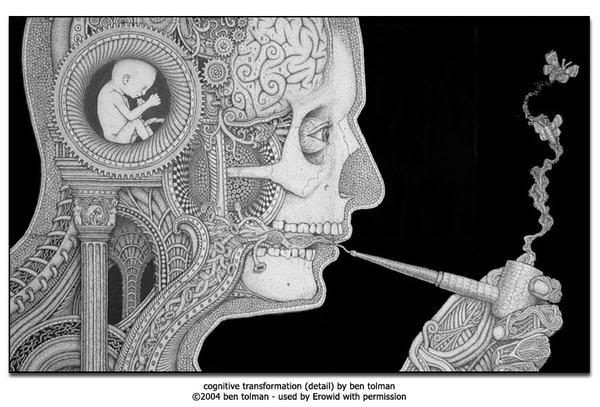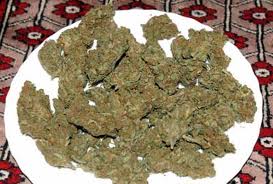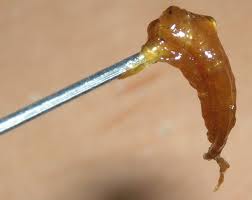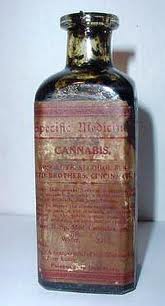
 Chemical name (−)-(6aR,10aR)-6,6,9-trimethyl-
3-pentyl-6a,7,8,10a-tetrahydro-
6H-benzo[c]chromen-1-ol
Chemical formula C21H30O2
Molecular mass 314.46 g/mol
Glass transition 9.3 °C
Boiling point 155-157 °C (vacuum, 0.07 mbar)
Solubility (water) 2.8 mg/L (23 °C)
Solubility (saline) 0.77 mg/L (NaCl, 0.15 M)
pKa 10.6
log P 3.78 (water @ pH 7 / octanol)
CAS number 1972-08-3
Chemical name (−)-(6aR,10aR)-6,6,9-trimethyl-
3-pentyl-6a,7,8,10a-tetrahydro-
6H-benzo[c]chromen-1-ol
Chemical formula C21H30O2
Molecular mass 314.46 g/mol
Glass transition 9.3 °C
Boiling point 155-157 °C (vacuum, 0.07 mbar)
Solubility (water) 2.8 mg/L (23 °C)
Solubility (saline) 0.77 mg/L (NaCl, 0.15 M)
pKa 10.6
log P 3.78 (water @ pH 7 / octanol)
CAS number 1972-08-3
 by ben tolman
by ben tolman
 With what's been coming hot off the press regarding our dear, child to sex siren, actress Lindsay Lohan's beautiful pictorial début in Playboy:
BEHOLD an "In the news with Lindsay Lohan" montage!
Here's the wanna be Rock 'n Rolla, yet, not so song birds skinny on the lately...
Lindsay Lohan’s "Marilyn Monroe-Inspired" Playboy Pictorial To Run in Jan Issue
ORIGINAL SHOOT - Hef Did Not Approve...a reshoot was ordered, rightly so, Hugh is THE MAN for good reason. Although it's not hard to see this first shoot was executed terribly.
With what's been coming hot off the press regarding our dear, child to sex siren, actress Lindsay Lohan's beautiful pictorial début in Playboy:
BEHOLD an "In the news with Lindsay Lohan" montage!
Here's the wanna be Rock 'n Rolla, yet, not so song birds skinny on the lately...
Lindsay Lohan’s "Marilyn Monroe-Inspired" Playboy Pictorial To Run in Jan Issue
ORIGINAL SHOOT - Hef Did Not Approve...a reshoot was ordered, rightly so, Hugh is THE MAN for good reason. Although it's not hard to see this first shoot was executed terribly.












 Not a bad remake, Ms. Lohan. The originator Ms. Marilyn Monroe~
Not a bad remake, Ms. Lohan. The originator Ms. Marilyn Monroe~
 Lindsay Lohan has caused so many heads to spin, someone thought it obligatory to bestow a strain unto her amazing beguiling character.
Wednesday, October 12, 2011
source:http://thechronic-le.blogspot.com/2011/10/medical-marijuana-strain-review-lindsay.html
Medical Marijuana Strain Review: Lindsay Lohan
Overview: I guess it was just a matter of time before America's #1 skank Linday Lohan got her own medical marijuana strain, unfortunately, much like the actual person, it is a bit of a disappointment.
Lindsay Lohan has caused so many heads to spin, someone thought it obligatory to bestow a strain unto her amazing beguiling character.
Wednesday, October 12, 2011
source:http://thechronic-le.blogspot.com/2011/10/medical-marijuana-strain-review-lindsay.html
Medical Marijuana Strain Review: Lindsay Lohan
Overview: I guess it was just a matter of time before America's #1 skank Linday Lohan got her own medical marijuana strain, unfortunately, much like the actual person, it is a bit of a disappointment.
 Looks: Lindsay Lohan is a beautiful strain with short, stubby and super dense light green leaves that are covered in a light frost and plenty of rust-colored hairs that come tangling out of the buds.
Taste/Smell: The taste was a little bit hashy and a little bit spicy. Not really a strong flavor here, but not entirely unpleasant.
Buzz: Lindsay Lohan has the looks and a fairly decent taste, but the buzz is where it falls short. It made me super lethargic and sleepy. I wasn't good for anything for the rest of the day. Not only did these buds shut my body down, but my mind was also slowed down which is unusual for me because weed usually gets my creative juices flowing and gets me thinking. This strain might be good for insomniacs looking for relief, but I probably wouldn't recommend it for any other medical uses and I have a feeling it could make the symptoms of depression even worse.
Overall Grade: C-
[youtube http://www.youtube.com/watch?v=_i5uCL5uZaQ&w=560&h=315]
No word has been confirmed as to whether or not Lindsay has penned the possible penis pleaser....
To be continued.
WE love you Lindsay!
Looks: Lindsay Lohan is a beautiful strain with short, stubby and super dense light green leaves that are covered in a light frost and plenty of rust-colored hairs that come tangling out of the buds.
Taste/Smell: The taste was a little bit hashy and a little bit spicy. Not really a strong flavor here, but not entirely unpleasant.
Buzz: Lindsay Lohan has the looks and a fairly decent taste, but the buzz is where it falls short. It made me super lethargic and sleepy. I wasn't good for anything for the rest of the day. Not only did these buds shut my body down, but my mind was also slowed down which is unusual for me because weed usually gets my creative juices flowing and gets me thinking. This strain might be good for insomniacs looking for relief, but I probably wouldn't recommend it for any other medical uses and I have a feeling it could make the symptoms of depression even worse.
Overall Grade: C-
[youtube http://www.youtube.com/watch?v=_i5uCL5uZaQ&w=560&h=315]
No word has been confirmed as to whether or not Lindsay has penned the possible penis pleaser....
To be continued.
WE love you Lindsay!
 By "Dr Kate" - Monday, August 31 1998
Eat some chocolate, run a hot bath and bask in the remedy that is straight from mother earth! Feel better, Ladies!
Sourced from Cannabis Culture Mag
Hundreds of testimonials show that marijuana can alleviate PMS!
In the 1800's cannabis was commonly used by women to ease menstrual cramps and labour pains. Yet by 1920, women were influenced into thinking that the symptoms they had around their period were due to innate physical problems, and their reproductive organs were often removed as a cure. Nowadays, women are often told that their very real physical symptoms are psychological, and handed a script for a prescription for antidepressants or tranquilizers.
These harsh drugs take weeks to build up in the system enough to produce a noticeable effect. It seems like overkill to take something that can throw many of the body's systems out of balance and cut down sex-drive, every day of the month, to try to cut symptoms that typically last 3-5 days, before and during a woman's period.
Often, all that's needed to relax the tense, stimulate the sluggish, and soothe the crampy, is a couple of puffs of RCMP ? Royal Canadian Marijuana Products.
We can now proclaim to the world that for many women PMS is hugely alleviated by cannabis resin. The proof lies in my collection of testimonial letters submitted by women from around the globe via the internet and regular post.
These personal experiences prove that women should be insisting on access to this good herb if they are victims of this disorder, which can be disabling and even marriage-threatening in extreme cases.
Almost 200 letters, stories, and submissions are powerfully convincing, many poignant to the point of inspiring tears in the eye of the reader, some too private to ever print. What follows are just a few typical examples:
Hi Dr Kate. I have used marijuana cigarettes for my premenstrual rages and grumpiness for the last 15 years. Works like a charm. My family is glad. What else would you like to know?
A husband writes:
My wife has used marijuana to control nausea and lessen cramps. It seems to work very well, even in low doses.
A Canadian lady writes:
About your medical marijuana and menstrual discomforts, etc. I have used it for many years for pre-menstrual cramps and bitchiness? PMS! It helps me to mellow out and to tolerate the intense lower pains that I get once a month for about 3 days.
From a man in the US:
My live-in girlfriend suffered from severe cramps and depression for 2 to 3 days a month during her period. She did not smoke pot until I suggested it might help out with this, since watching her suffer was agonizing for me too.
The results were even better than expected, and she continues to smoke pot for this condition. She did do some rare occasional recreational smoking, but every cycle the pot would make her life considerably easier.
She has since moved to a state where anti-pot laws are severe, so she often does without for this reason.
And finally, from a teenager:
Dear Dr Kate, I have smoked up since I was 14. Now I'm 17. My mom found out and so I had to stop, but when it's that time of the month, I sneak over to my friend's house if she has some, because it really helps the cramps and headache.
Herbal remedy experts
In my studies of herbal remedies and natural healing methods I have found only a small handful of herbal expert writers courageous and honest enough to include cannabis in their repertoires.
One of these is the late,great Dr John R Christopher, author of School of Natural Healing, the greatest herbal and natural healing instructive text. He and other early herbalists call cannabis by the name Indian Hemp, but there is no doubt they are referring to the medicinal herb.
Dr Christopher lists cannabis in 11 different categories of usefulness, including Hypnotic, Antispasmodic, Analgesic, and Emmenagogue, which is described as follows:
Herbs that are female correctives to the reproductive organs, which stimulate and promote a normal menstrual function, flow and discharge.
Susun Weed is the only prominent herbalist of our time who is brave enough to speak up in defense of the much-slandered herb. She also explains that cannabis as an important emmenagogue, and describes the benefit of a couple of puffs of nice, warm bronchial-dilating smoke as "good exercise for the lungs."
I quote her "Wise Woman" philosophies often, because they are full of common-sense insights and down-to-earth wisdom. She has knowledge only experience can bring. Susun is revered among midwives and natural women of all ages who want to take responsibility for their own bodies.
Dr Kate can be reached by email at: galbraithe@upanet.uleth.ca.
Home Remedies and Natural Cures for Menstrual Cramps Treatment
From HomeRemedies.com
Menstrual Cramps Home Remedy Using Heating Pads
Many women have found that a heating pad placed on your lower back or abdomen helps to ease the pain and discomfort of menstrual cramps. If you don't have a heating pad, one can be easily made by filling a sock with flaxseeds or uncooked rice and heating it in the microwave for 1 to 2 minutes.
Menstrual Cramps Home Remedy Using Chamomile
Chamomile is widely used to treat gynecologic complaints such as menstrual cramps and discomfort related to premenstrual syndrome (PMS). Add 2 teaspoons of dried Chamomile flowers to a cup of boiling water and let it steep for at least 5 minutes. If you are using a package of Chamomile tea bags, then follow the directions as stated on the box. Honey or sugar can be added for taste. A good preventive measure is to start drinking Chamomile tea a couple of days before you are expecting your period, and then drink at least 2 cups everyday during your period. It also feels great if you use your hot mug as a hot compress for your lower abdomen while you are drinking it.
Vitamins and Minerals for Treating Menstrual Cramps
Foods and supplements that are rich in B-vitamins, calcium, magnesium, and zinc have been found to reduce the pain, bloating and other symptoms of menstrual cramps.
In particular, calcium is known to help maintain muscle tone as well as prevent cramps and pain. For most women, a daily intake of 800 mg of calcium is recommended, which can be found in 3 cups of milk. Increasing magnesium is also recommended, since it helps the body absorb calcium. Good sources of magnesium include beans, whole wheat, tofu, salmon, shrimp, nuts, and vegetables.
Regular Exercise as a Natural Cure for Menstrual Cramps
Exercise is considered to be a natural way to reduce muscle tension and elevate one's mood. Therefore, maintaining a regular exercise program, including something as simple as walking for 20 minutes each day, can help reduce the severity of menstrual cramps.
Ginger Root Tea to Relieve Menstrual Cramps
Ginger root has been found to help relieve the pain associated with menstrual cramps. Therefore, a simple soothing herbal tea can made from Ginger as follows:
Slice a handful of ginger root
Let the pieces simmer in boiling water for 15 minutes
Using a strainer, pour the tea into a drinking cup or mug
Add some honey as a natural sweetener if desired
By "Dr Kate" - Monday, August 31 1998
Eat some chocolate, run a hot bath and bask in the remedy that is straight from mother earth! Feel better, Ladies!
Sourced from Cannabis Culture Mag
Hundreds of testimonials show that marijuana can alleviate PMS!
In the 1800's cannabis was commonly used by women to ease menstrual cramps and labour pains. Yet by 1920, women were influenced into thinking that the symptoms they had around their period were due to innate physical problems, and their reproductive organs were often removed as a cure. Nowadays, women are often told that their very real physical symptoms are psychological, and handed a script for a prescription for antidepressants or tranquilizers.
These harsh drugs take weeks to build up in the system enough to produce a noticeable effect. It seems like overkill to take something that can throw many of the body's systems out of balance and cut down sex-drive, every day of the month, to try to cut symptoms that typically last 3-5 days, before and during a woman's period.
Often, all that's needed to relax the tense, stimulate the sluggish, and soothe the crampy, is a couple of puffs of RCMP ? Royal Canadian Marijuana Products.
We can now proclaim to the world that for many women PMS is hugely alleviated by cannabis resin. The proof lies in my collection of testimonial letters submitted by women from around the globe via the internet and regular post.
These personal experiences prove that women should be insisting on access to this good herb if they are victims of this disorder, which can be disabling and even marriage-threatening in extreme cases.
Almost 200 letters, stories, and submissions are powerfully convincing, many poignant to the point of inspiring tears in the eye of the reader, some too private to ever print. What follows are just a few typical examples:
Hi Dr Kate. I have used marijuana cigarettes for my premenstrual rages and grumpiness for the last 15 years. Works like a charm. My family is glad. What else would you like to know?
A husband writes:
My wife has used marijuana to control nausea and lessen cramps. It seems to work very well, even in low doses.
A Canadian lady writes:
About your medical marijuana and menstrual discomforts, etc. I have used it for many years for pre-menstrual cramps and bitchiness? PMS! It helps me to mellow out and to tolerate the intense lower pains that I get once a month for about 3 days.
From a man in the US:
My live-in girlfriend suffered from severe cramps and depression for 2 to 3 days a month during her period. She did not smoke pot until I suggested it might help out with this, since watching her suffer was agonizing for me too.
The results were even better than expected, and she continues to smoke pot for this condition. She did do some rare occasional recreational smoking, but every cycle the pot would make her life considerably easier.
She has since moved to a state where anti-pot laws are severe, so she often does without for this reason.
And finally, from a teenager:
Dear Dr Kate, I have smoked up since I was 14. Now I'm 17. My mom found out and so I had to stop, but when it's that time of the month, I sneak over to my friend's house if she has some, because it really helps the cramps and headache.
Herbal remedy experts
In my studies of herbal remedies and natural healing methods I have found only a small handful of herbal expert writers courageous and honest enough to include cannabis in their repertoires.
One of these is the late,great Dr John R Christopher, author of School of Natural Healing, the greatest herbal and natural healing instructive text. He and other early herbalists call cannabis by the name Indian Hemp, but there is no doubt they are referring to the medicinal herb.
Dr Christopher lists cannabis in 11 different categories of usefulness, including Hypnotic, Antispasmodic, Analgesic, and Emmenagogue, which is described as follows:
Herbs that are female correctives to the reproductive organs, which stimulate and promote a normal menstrual function, flow and discharge.
Susun Weed is the only prominent herbalist of our time who is brave enough to speak up in defense of the much-slandered herb. She also explains that cannabis as an important emmenagogue, and describes the benefit of a couple of puffs of nice, warm bronchial-dilating smoke as "good exercise for the lungs."
I quote her "Wise Woman" philosophies often, because they are full of common-sense insights and down-to-earth wisdom. She has knowledge only experience can bring. Susun is revered among midwives and natural women of all ages who want to take responsibility for their own bodies.
Dr Kate can be reached by email at: galbraithe@upanet.uleth.ca.
Home Remedies and Natural Cures for Menstrual Cramps Treatment
From HomeRemedies.com
Menstrual Cramps Home Remedy Using Heating Pads
Many women have found that a heating pad placed on your lower back or abdomen helps to ease the pain and discomfort of menstrual cramps. If you don't have a heating pad, one can be easily made by filling a sock with flaxseeds or uncooked rice and heating it in the microwave for 1 to 2 minutes.
Menstrual Cramps Home Remedy Using Chamomile
Chamomile is widely used to treat gynecologic complaints such as menstrual cramps and discomfort related to premenstrual syndrome (PMS). Add 2 teaspoons of dried Chamomile flowers to a cup of boiling water and let it steep for at least 5 minutes. If you are using a package of Chamomile tea bags, then follow the directions as stated on the box. Honey or sugar can be added for taste. A good preventive measure is to start drinking Chamomile tea a couple of days before you are expecting your period, and then drink at least 2 cups everyday during your period. It also feels great if you use your hot mug as a hot compress for your lower abdomen while you are drinking it.
Vitamins and Minerals for Treating Menstrual Cramps
Foods and supplements that are rich in B-vitamins, calcium, magnesium, and zinc have been found to reduce the pain, bloating and other symptoms of menstrual cramps.
In particular, calcium is known to help maintain muscle tone as well as prevent cramps and pain. For most women, a daily intake of 800 mg of calcium is recommended, which can be found in 3 cups of milk. Increasing magnesium is also recommended, since it helps the body absorb calcium. Good sources of magnesium include beans, whole wheat, tofu, salmon, shrimp, nuts, and vegetables.
Regular Exercise as a Natural Cure for Menstrual Cramps
Exercise is considered to be a natural way to reduce muscle tension and elevate one's mood. Therefore, maintaining a regular exercise program, including something as simple as walking for 20 minutes each day, can help reduce the severity of menstrual cramps.
Ginger Root Tea to Relieve Menstrual Cramps
Ginger root has been found to help relieve the pain associated with menstrual cramps. Therefore, a simple soothing herbal tea can made from Ginger as follows:
Slice a handful of ginger root
Let the pieces simmer in boiling water for 15 minutes
Using a strainer, pour the tea into a drinking cup or mug
Add some honey as a natural sweetener if desired

 Resin
Resin

 Powder/ Kief
Powder/ Kief

 Kief Hash
Kief Hash
 Oil/ Ear Wax
Oil/ Ear Wax

 Tincture/ Extract
Tincture/ Extract

 Effects and uses of cannabis
Cannabis is most widely used as a illegal street drug for its relaxing properties. It is usually rolled into a cigarette known as a joint, but can also be smoked in a pipe, brewed as a tea or mixed with food.
The main active ingredient in cannabis is tetrahydrocannabino (THC). One type, skunk, can be particularly potent as it contains two to three time as much THC as other types.
Cannabis acts as a mild sedative, leaving most people feeling relaxed, chilled out or just sleepy. It also:
Has mild hallucinogenic effects, causing a distortion of reality
Makes some people become more animated
Releases inhibitions, making people talkative or giggly
Can cause nausea in some people (despite the fact that cannabis can have an anti-nausea effect), while it quite often makes others feel hungry
Cannabis or its derivatives may also be used as a medical treatment. There is some scientific evidence to suggest it may be useful in a wide range of conditions. But the complex nature of the substances contained within the plant makes it difficult for medical research to establish clearly its safety or efficacy, so its effects are far from proven or well-understood. The active chemicals within cannabis (known as a group as cannabinoids) are gradually being identified and wide-scale trials testing the safety and efficacy of these cannabis extracts (or synthetic forms of them) are currently underway in the UK and elsewhere.
For instance, cannabis appears to be able to help reduce the side effects of chemotherapy treatment, although not more so than other already established medications. The drugs used to treat cancer are among the most powerful, and most toxic, used in medicine. They produce unpleasant side effects, such as days or weeks of vomiting and nausea after each treatment. Some cannabinoids relieve nausea and allow patients to eat and live normally.
Extracts also seem to benefit patients suffering from multiple sclerosis, although most of the benefit seems to be from people feeling more relaxed when taking a cannabinoid or medical derivative of cannabis. Recent research showed no reduction in muscle spasticity.
Claims have also been made for its use in treating:
Migraine
Headaches
Asthma
Strokes
Parkinson's disease
Alzheimer's disease
Alcoholism
Insomnia
Risks of cannabis
There's increasing evidence that cannabis use is linked to a number of health risks. It damages the ability to concentrate, decreases motivation and more than occasional use in teenagers can affect psychological development. Users can become anxious, suspicious and even paranoid. Heavy use increases the risk of serious psychiatric illness.
Users of skunk, a stronger and increasingly more available form of cannabis, are seven times more likely to develop a psychotic illness, such as schizophrenia, than people not using cannabis or using the more traditional forms. Cannabis also interferes with coordination, causing problems with balance, walking and driving.
There are other side effects of the drug, but they vary considerably and are less predictable, partly because cannabis has more than 400 active ingredients. They may include effects on the heart, such as increased heart rate and blood pressure, and damage to fertility. People who smoke cannabis are also exposed to the toxic chemicals in tobacco smoke.
People may become dependent on cannabis and find it difficult to stop using it, experiencing unpleasant withdrawal symptoms if they do stop such as cravings, agitation, mood changes, sleep problems, appetite disturbance and other symptoms.
The debate over the use of cannabis in medicine is highly controversial and emotive. Supporters of the drug claim it has wide-ranging benefits, but opponents say it is a potentially dangerous substance that can actually damage health.
Cannabis and the law
The use of cannabis remains illegal (except for prescribed cannabinoids as described above). It is a Class B drug. As a result, the penalties for getting caught with cannabis, especially on repeated occasions, can be severe.
A report by the House of Lords Science and Technology Committee recommended the use of cannabis for medicinal purposes. However, the British Medical Association (BMA) did not give the report 100 per cent support and believes only cannabinoids - carefully identified chemical derivatives of the cannabis plant - should be used in medicine. TheGovernment says it will not consider legalising cannabis for medical use until clinical trials had been completed.
Advice and support
Occasional users of cannabis may be able to give it up, although they may find it harder to give up the general smoking habit. However, heavier users may need expert help to stop. Talk to your GP or local community drug agency or clinic.
Effects and uses of cannabis
Cannabis is most widely used as a illegal street drug for its relaxing properties. It is usually rolled into a cigarette known as a joint, but can also be smoked in a pipe, brewed as a tea or mixed with food.
The main active ingredient in cannabis is tetrahydrocannabino (THC). One type, skunk, can be particularly potent as it contains two to three time as much THC as other types.
Cannabis acts as a mild sedative, leaving most people feeling relaxed, chilled out or just sleepy. It also:
Has mild hallucinogenic effects, causing a distortion of reality
Makes some people become more animated
Releases inhibitions, making people talkative or giggly
Can cause nausea in some people (despite the fact that cannabis can have an anti-nausea effect), while it quite often makes others feel hungry
Cannabis or its derivatives may also be used as a medical treatment. There is some scientific evidence to suggest it may be useful in a wide range of conditions. But the complex nature of the substances contained within the plant makes it difficult for medical research to establish clearly its safety or efficacy, so its effects are far from proven or well-understood. The active chemicals within cannabis (known as a group as cannabinoids) are gradually being identified and wide-scale trials testing the safety and efficacy of these cannabis extracts (or synthetic forms of them) are currently underway in the UK and elsewhere.
For instance, cannabis appears to be able to help reduce the side effects of chemotherapy treatment, although not more so than other already established medications. The drugs used to treat cancer are among the most powerful, and most toxic, used in medicine. They produce unpleasant side effects, such as days or weeks of vomiting and nausea after each treatment. Some cannabinoids relieve nausea and allow patients to eat and live normally.
Extracts also seem to benefit patients suffering from multiple sclerosis, although most of the benefit seems to be from people feeling more relaxed when taking a cannabinoid or medical derivative of cannabis. Recent research showed no reduction in muscle spasticity.
Claims have also been made for its use in treating:
Migraine
Headaches
Asthma
Strokes
Parkinson's disease
Alzheimer's disease
Alcoholism
Insomnia
Risks of cannabis
There's increasing evidence that cannabis use is linked to a number of health risks. It damages the ability to concentrate, decreases motivation and more than occasional use in teenagers can affect psychological development. Users can become anxious, suspicious and even paranoid. Heavy use increases the risk of serious psychiatric illness.
Users of skunk, a stronger and increasingly more available form of cannabis, are seven times more likely to develop a psychotic illness, such as schizophrenia, than people not using cannabis or using the more traditional forms. Cannabis also interferes with coordination, causing problems with balance, walking and driving.
There are other side effects of the drug, but they vary considerably and are less predictable, partly because cannabis has more than 400 active ingredients. They may include effects on the heart, such as increased heart rate and blood pressure, and damage to fertility. People who smoke cannabis are also exposed to the toxic chemicals in tobacco smoke.
People may become dependent on cannabis and find it difficult to stop using it, experiencing unpleasant withdrawal symptoms if they do stop such as cravings, agitation, mood changes, sleep problems, appetite disturbance and other symptoms.
The debate over the use of cannabis in medicine is highly controversial and emotive. Supporters of the drug claim it has wide-ranging benefits, but opponents say it is a potentially dangerous substance that can actually damage health.
Cannabis and the law
The use of cannabis remains illegal (except for prescribed cannabinoids as described above). It is a Class B drug. As a result, the penalties for getting caught with cannabis, especially on repeated occasions, can be severe.
A report by the House of Lords Science and Technology Committee recommended the use of cannabis for medicinal purposes. However, the British Medical Association (BMA) did not give the report 100 per cent support and believes only cannabinoids - carefully identified chemical derivatives of the cannabis plant - should be used in medicine. TheGovernment says it will not consider legalising cannabis for medical use until clinical trials had been completed.
Advice and support
Occasional users of cannabis may be able to give it up, although they may find it harder to give up the general smoking habit. However, heavier users may need expert help to stop. Talk to your GP or local community drug agency or clinic.